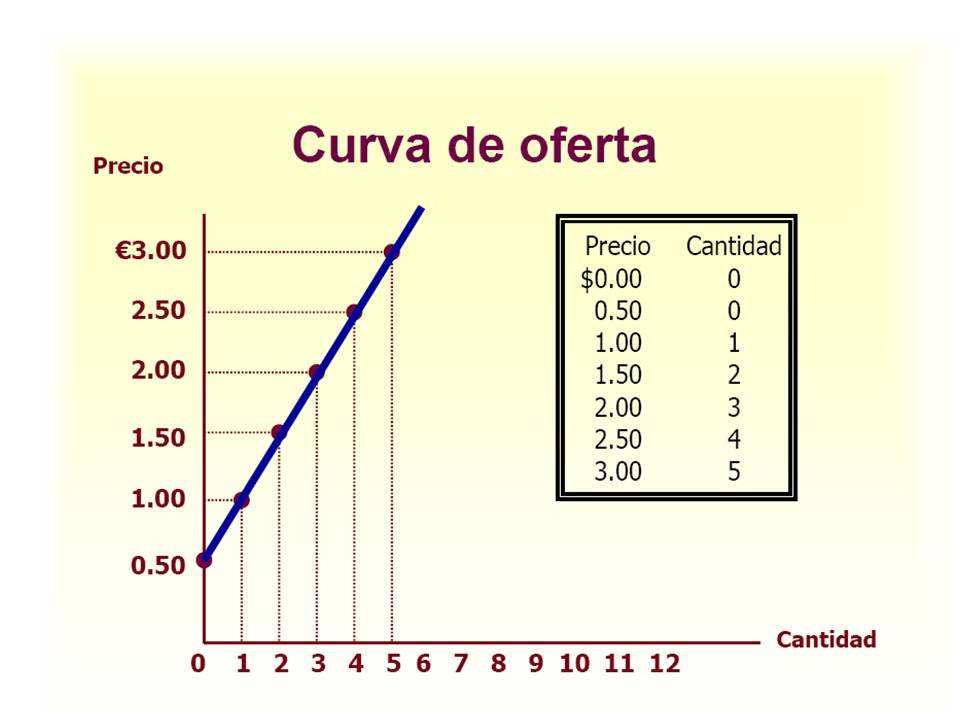Curva de oferta is a fundamental concept in economics that refers to the supply curve of goods and services in a market. This curve illustrates the relationship between the price of a product and the quantity of that product that suppliers are willing to offer for sale. Understanding the curva de oferta is essential for analyzing market dynamics and making predictions about how changes in supply can impact prices and quantities exchanged.
In economics, the curva de oferta is typically upward-sloping, indicating that as the price of a product increases, suppliers are willing to offer more of that product in the market. This relationship is based on the law of supply, which states that all else being equal, higher prices lead to higher quantities supplied. The shape of the curva de oferta can vary depending on factors such as production costs, technology, and government regulations.
By studying the curva de oferta, economists can gain insights into how producers respond to changes in market conditions. For example, if the price of a product rises, suppliers may increase production to take advantage of higher profits, leading to a rightward shift in the supply curve. Conversely, if production costs increase, the supply curve may shift to the left as suppliers are no longer able to offer the same quantity of goods at existing prices.
What Factors Influence the Curva de Oferta?
1. Price of Inputs
One of the key factors that influence the curva de oferta is the price of inputs used in production. When input prices rise, production costs increase, leading to a decrease in the quantity of goods that suppliers are willing to offer at any given price. This can result in a leftward shift of the supply curve, reflecting a decrease in supply.
2. Technology and Innovation
Technological advancements and innovations can also impact the curva de oferta. Improved technology can lead to lower production costs, allowing suppliers to offer more goods at lower prices. This can cause the supply curve to shift to the right, indicating an increase in supply.
How Do Changes in Demand Affect the Curva de Oferta?
Changes in demand can have a significant impact on the curva de oferta. When demand for a product increases, suppliers may respond by increasing production to meet the higher level of demand. This can result in a rightward shift of the supply curve, reflecting an increase in supply to accommodate the higher demand.
What is the Relationship Between the Curva de Oferta and Equilibrium Price?
The curva de oferta plays a crucial role in determining the equilibrium price in a market. The equilibrium price is the price at which the quantity supplied equals the quantity demanded, resulting in a stable market price. By analyzing the intersection of the curva de oferta and the demand curve, economists can identify the equilibrium price and quantity in a market.
How Do External Factors Impact the Curva de Oferta?
External factors such as government regulations, taxes, and subsidies can also influence the curva de oferta. For example, government policies that increase production costs can lead to a leftward shift in the supply curve, reducing the quantity of goods supplied at any given price. On the other hand, subsidies that lower production costs can result in a rightward shift of the supply curve, increasing the quantity of goods supplied.
Exploring The Mediterranean Climate In Spain
Voting Rights Amendment: Ensuring Equality In Democratic Processes
Understanding The Impact Of Rising CO2 Levels

Curva de oferta Wikipedia, la enciclopedia libre

Lei da Oferta e da Demanda (ou Procura) entenda o que é, com exemplos

A Curva Da Oferta Consiste Na Representação Gráfica